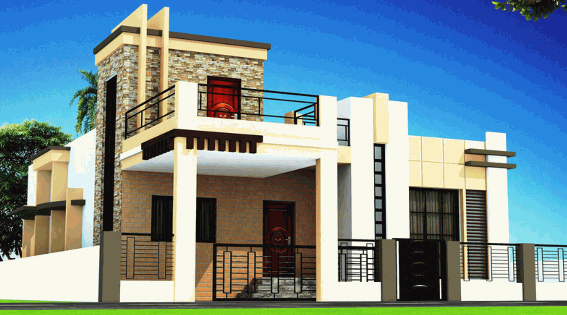Exterior rendering is an effective visualization technique that brings architectural designs to fruition, transforming concepts into striking visual representations. This article examines the importance of exterior rendering, emphasizing its role in enhancing aesthetic appeal, facilitating design decisions, and providing significant savings in both time and financial resources. It outlines the various types of rendering, the step-by-step processes involved, and the essential software and tools necessary for effective execution. Additionally, it highlights the numerous benefits that exterior rendering offers for marketing and collaborative efforts. Explore how exterior rendering can elevate your projects to unprecedented levels of success.

What Is Exterior Rendering?
Exterior rendering is an essential process in home improvement that entails the application of specific materials to the external walls of a residence. This process not only enhances the aesthetic value of the property but also provides critical weather protection and improves insulation.
Homeowners have access to a variety of rendering options, including cement render, polymer render, and acrylic renders, allowing them to select based on their individual preferences and the distinct requirements of their property. This technique is vital for establishing a waterproof barrier and enhancing the curb appeal of modern homes while ensuring compliance with local building regulations.

Why Is Exterior Rendering Important?
Exterior rendering is crucial for various reasons, including enhancing energy efficiency and offering a protective barrier against adverse weather conditions, which can substantially lower long-term maintenance expenses.
The application of render also contributes to the aesthetic appeal and curb appeal of a property, representing a worthwhile investment for homeowners seeking to upgrade their residences with exterior updates and exterior wall insulation.
Familiarity with the pros and cons of different render types, such as cement render or silicone render, can assist homeowners in making educated decisions regarding exterior improvements, ensuring that the selected methods comply with building regulations and do not require additional planning permission.
Enhances Visual Appeal
Exterior rendering significantly enhances the visual appeal of a residence by providing a clean, modern, and aesthetically pleasing external finish that can transform the overall look and feel of a property.
By carefully selecting various types of renderings, homeowners can customize their design to reflect personal style and contemporary architectural trends. Options range from sleek, smooth finishes to textured surfaces that add depth and character. For example, smooth render often draws inspiration from modernist designs, presenting a minimalist facade that pairs elegantly with large glass windows. In contrast, textured render can evoke a sense of rustic charm, reminiscent of traditional country homes. The selection of house cladding materials is crucial in achieving a harmonious overall aesthetic.
Utilizing materials such as timber or stone not only enhances the exterior’s beauty but also contributes to the durability of the structure. Incorporating finishing touches, such as color accents, trims, and landscaping, further elevates the facade, creating a visual narrative that defines the home’s identity.
Ultimately, the appropriate combination of render and complementary materials can culminate in a striking portfolio of aesthetic appeal that is both inviting and distinctive.
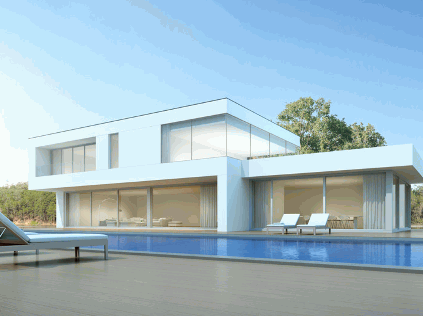
Helps With Design Decisions
In the field of home improvement, exterior rendering is a crucial factor that influences design decisions, serving as a fundamental component that affects various construction techniques and choices throughout the renovation process. An understanding of the different types of render available, including acrylic and silicone options, enables homeowners to make informed decisions that align with their aesthetic goals, whether they seek a traditional appearance or a modern aesthetic. This knowledge gives individuals the power to explore various render applications that enhance both functionality and aesthetics.
When selecting a rendering style, it is imperative to consider how it complements other design elements of the home, such as color schemes and architectural features, ensuring a harmonious external finish.
- The choice of colors can significantly impact the perception of a space, altering its appearance to seem larger or more intimate.
- Textures introduced through rendering can provide depth and interest, playing a vital role in achieving visual harmony.
- Different rendering styles may prompt homeowners to reconsider other materials and finishes throughout the property.
Incorporating modern techniques, such as insulation rendering, not only enhances energy efficiency but also creates opportunities for future improvements.
Ultimately, the appropriate choice of exterior rendering can act as a catalyst for additional renovations, inspiring creative updates that reflect personal tastes while enhancing the overall curb appeal of the property.
Saves Time And Money
Investing in exterior rendering can ultimately yield significant savings for homeowners by reducing long-term maintenance costs and enhancing energy efficiency, thereby serving as a prudent financial solution for property improvement and property enhancement.
By selecting the appropriate type of render, such as polymer or monocouche, homeowners can decrease the frequency of repairs and maintenance, ensuring that their exterior walls remain in excellent condition for an extended period. This proactive approach to home renovation allows property owners to allocate resources more effectively.
Although the initial investment in rendering may be considerable, it often proves to be financially advantageous over time; the energy efficiency achieved through effective insulation can lead to substantial reductions in heating and cooling expenses. Homes that incorporate high-quality rendering generally experience an increase in property value, which can provide a significant benefit should the homeowner choose to sell.
In summary, the decision to invest in rendering represents a cost-effective strategy that results in long-term savings and enhanced property aesthetics.
- Lower maintenance costs
- Increased property value
- Enhanced energy efficiency

Allows For Better Communication
Effective communication between homeowners and tradesmen during the exterior rendering process is essential for ensuring that design intentions are realized, repairs are executed efficiently, and aesthetic objectives are achieved. By engaging in clear discussions regarding render options, including those that offer weather protection or self-cleaning properties, homeowners can attain their desired outcomes with enhanced satisfaction. This collaborative approach not only contributes to the project’s success but also fosters trust and understanding among all parties involved.
The importance of this communication extends to various aspects of the project, encompassing not only the types of render options but also the techniques utilized during application. By participating in detailed discussions on these topics, homeowners can gain valuable insights from tradesmen who possess specialized knowledge and experience.
Key benefits of effective communication include:
- Improved preparation and planning
- Minimized delays and misunderstandings
- Enhanced aesthetic outcomes that align with the homeowner’s vision
Ultimately, leveraging the expertise of tradesmen is crucial when navigating the complex realm of exterior rendering, where each decision can significantly impact both the functionality and visual appeal of the property, especially in urban brownfield or eco-home projects.
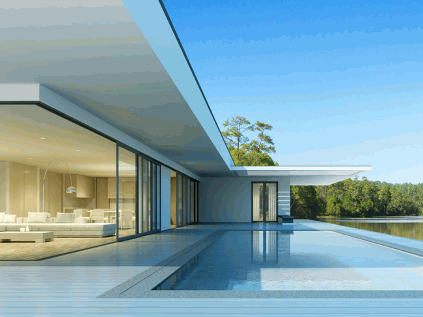
What Are The Different Types Of Exterior Rendering?
A comprehensive understanding of the various types of exterior rendering is crucial for both homeowners and builders, as each option provides distinct benefits and applications tailored to specific needs and preferences.
Traditional materials such as lime render and cement render, alongside modern alternatives like polymer and silicone render, contribute to enhanced energy efficiency, weather protection, and aesthetic appeal. Options like coloured house render and dual cladding further allow for tailored exterior updates.
Furthermore, innovations such as colored house renderings and self-cleaning renders offer compelling options for individuals looking to improve the exterior appearance of their properties.
Photorealistic Rendering
Photorealistic rendering is a sophisticated technique employed in exterior rendering that seeks to produce images that closely resemble real life. This method significantly enhances visual appeal and serves as a source of design inspiration for both homeowners and architects. By capturing intricate details—ranging from textures to light reflections—this approach allows for a realistic representation of how various renderings will appear on a building. Such precision is instrumental in facilitating informed decisions related to color and material selections, ensuring that the final result aligns with the homeowner’s vision.
The implementation of this technology in exterior design, including house rendering, offers numerous advantages. It notably improves the decision-making process by providing a lifelike visualization of the proposed design, thereby minimizing the risk of costly modifications once construction commences.
Homeowners can:
- Evaluate a variety of architectural styles and select the one that best reflects their preferences.
- Experiment with different landscaping options, allowing them to visualize how garden arrangements will enhance the overall design.
- Make adjustments with ease, ensuring that each element—from the exterior facade to outdoor lighting—integrates seamlessly into the envisioned aesthetic.
This capacity for detailed visualization not only encourages creativity but also enhances collaboration between homeowners and designers, ultimately contributing to a more satisfying and successful project outcome.
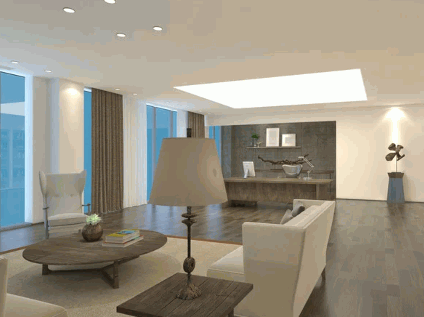
Non-Photorealistic Rendering
Non-photorealistic rendering represents a distinctive approach to visualization in exterior rendering that emphasizes artistic expression and interpretation rather than strictly realistic portrayals. This methodology facilitates creative design solutions that can resonate with diverse aesthetic sensibilities, especially in contemporary homes.
It is particularly advantageous in experimental projects that seek unconventional designs, providing architects and designers with a flexible framework to explore innovative concepts in exterior rendering. By concentrating on elements such as form, color, and texture, non-photorealistic rendering accentuates the creative potential inherent in exterior finishes.
This technique not only encourages imaginative interpretations but also acts as a catalyst for collaboration among cross-disciplinary teams, thereby enhancing the design process. For example, in notable projects such as the Vitra Fire Station in Germany, the Barcelona Pavilion designed by Mies van der Rohe, and the Museum of Contemporary Art in Santa Barbara, architects have successfully employed non-photorealistic rendering to challenge conventional boundaries and create structures that effectively convey their intended messages without relying solely on traditional realism.
These projects exemplify how this rendering method cultivates unique narratives, engages audiences on an emotional level, and can lead to innovative concepts. Ultimately, through the strategic use of color, light, and abstract forms, non-photorealistic rendering provides designers with a valuable avenue to explore more expressive and customized environments.
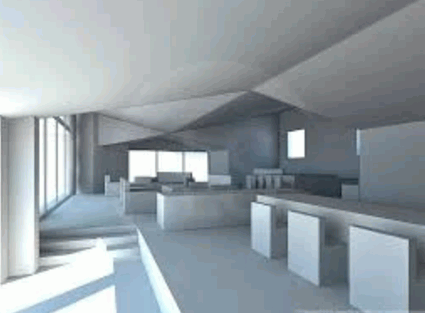
Interactive Rendering
Interactive rendering represents an advanced technique in exterior rendering that enables users to actively engage in the design process by manipulating various elements of a rendering in real-time. This fosters a more collaborative and personalized approach to design exploration and insulation upgrading.
Such engagement gives the power to homeowners to visualize alterations, including different rendering types and colors, thereby enabling them to make informed decisions that align with their individual styles and preferences. Ultimately, this technique bridges the gap between vision and reality, ensuring that the final output aligns with the homeowner’s expectations.
By utilizing this method, individuals transition from being passive observers to becoming active participants in the design journey. The adoption of cutting-edge tools, such as Virtual Reality (VR), Augmented Reality (AR), and specialized interactive rendering software, allows users to immerse themselves in their designs within dynamic environments.
This not only enhances their understanding but also increases satisfaction, as they can witness the immediate effects of changes on the overall aesthetic.
- Enhanced User Engagement: Users can manipulate textures, lighting settings, and spatial layouts, vividly realizing their dream design.
- Informed Decision-Making: Real-time feedback facilitates swift adjustments based on user preferences, fostering a sense of ownership.
- Streamlined Communication: This approach enhances communication between designers and clients, enabling instant resolution of visual discrepancies.
- Cost Management: Rendering costs are reduced through efficient processes and materials choice.
Such innovative strategies significantly transform the traditional design paradigm into one that genuinely resonates with client aspirations, ultimately leading to improved project outcomes.

Virtual Reality Rendering
Virtual reality rendering provides an immersive experience that elevates exterior rendering, allowing homeowners and designers to engage within a virtual environment and interact with their design choices in a fully immersive manner. This technique substantially enhances design decisions by offering a realistic perspective on scale, proportion, and spatial interaction, ensuring that every detail is in alignment with the homeowner’s vision for their property. Through the integration of advanced technologies, virtual reality rendering is revolutionizing the conceptualization and execution of exterior designs.
This innovative technology not only facilitates visualization but also provides users with tools to assess various elements of their designs in real-time. Homeowners can experiment with different materials, colors, and landscape features while receiving immediate feedback on their selections. Such capabilities promote greater collaboration between designers and clients, resulting in more refined and aligned project outcomes.
The benefits of this technology include:
- Enhanced Accuracy: Simulating real-world conditions reduces errors during the design phase.
- Time Efficiency: Virtual walkthroughs streamline decision-making processes, eliminating lengthy revisions.
- Cost Effectiveness: Minimizing the need for expensive physical models aids in budget management.
In conclusion, virtual reality rendering signifies a substantial advancement in the home design industry, fundamentally transforming the way projects are visualized and executed.
What Are The Steps Involved In Exterior Rendering?
The steps involved in exterior rendering are critical for achieving a successful application, encompassing initial preparations to final finishing touches that contribute to longevity, durability, and aesthetic appeal, including render repair and protective coating application.
Initially, a comprehensive assessment of the existing structure must be conducted, followed by the selection of suitable render materials, such as monocouche renders, that align with the overall design vision.
The rendering process involves meticulous surface preparation, precise application, and adequate curing, all of which are essential for minimizing issues related to dampness and ensuring low maintenance costs in the future.
Creating A 3D Model
Creating a 3D model is a fundamental step in the exterior rendering process, providing a comprehensive visualization that assists homeowners and designers in conceptualizing the final appearance of the property. This model functions as a blueprint for understanding proportions, spatial relationships, and design elements, thereby ensuring that the selected render type, such as traditional lime renders, and aesthetics align with the homeowner’s vision. The utilization of advanced design software enhances the accuracy of this model and permits easy modifications as required.
Through the application of sophisticated tools such as CAD software, architects and designers can produce photorealistic 3D representations of exteriors. This method not only facilitates precise alterations but also assists in the selection of materials that best align with the overall design intent. By simulating various lighting conditions and environmental settings, the 3D model offers invaluable insights into how different finishes and textures will manifest in reality.
- It promotes informed design decisions by illustrating the interaction between light and shadow.
- It enhances communication between clients and designers, ensuring the establishment of effective feedback loops.
The significant role of a 3D model in the exterior rendering process is crucial, as it translates a vision into a realistic framework that is both adaptable and practical.
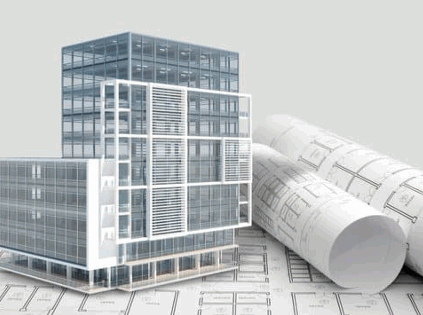
Adding Materials And Textures
Incorporating materials and textures into the 3D model is an essential phase in the exterior rendering process, as it enables visualizers to simulate the appearance and tactile qualities of the completed project prior to actual implementation. This phase involves selecting the appropriate type of render, such as acrylic, polymer, or silicone, and applying realistic textures that accurately replicate the final exterior finish.
By visualizing these elements, homeowners are empowered to make informed decisions regarding color schemes and surface treatments that enhance the overall aesthetic value.
The selection of suitable materials plays a significant role in determining how light interacts with surfaces, which ultimately affects the ambiance of the space. When visualizers opt for high-quality textures that accurately reflect various materials—whether wood, stone, or metal—they create a more lifelike representation, which is especially important for renovation inspiration. This not only enhances visual appeal but also aligns with the overall design strategy, facilitating a seamless integration of functionality and beauty.
Understanding the properties of these materials, such as durability and maintenance requirements, and addressing potential damp issues allows homeowners to anticipate long-term satisfaction with their design choices.
- External Wall Insulation: Essential for energy efficiency, particularly in achieving standards like Passivhaus.
- Material selection influences color perception and tactile experience.
- Realistic rendering aids in the early identification of potential design flaws.
- Thoughtful integration of materials can elevate the overall design narrative.

Setting Up Lighting And Shadows
Setting up lighting and shadows is a crucial element of the exterior rendering process, as it adds depth and realism to the visual representation of the design. Properly configured lighting enhances the textures and colors of the selected materials, allowing homeowners to visualize how their property will appear under various lighting conditions. This meticulous attention to detail not only enriches the design visualization but also facilitates final adjustments to achieve the desired aesthetic outcome. Additionally, considering tradesmen advice can ensure that the lighting is both practical and visually pleasing.
The selection of a specific lighting setup can significantly influence the perception of various elements, transforming an ordinary visualization into an extraordinary one. For example, directional lighting can create striking contrasts that accentuate architectural features, while soft ambient lighting can evoke a more inviting atmosphere. Moreover, the various colors in the exterior palette may appear differently depending on whether they are illuminated by warm sunlight or cool shadows, potentially leading to shifts in material selections. Considerations of rendering products, such as Acrylic and Silicone, are vital to achieving the desired effects.
- With natural light, textures become vivid, showcasing their intricate details.
- Conversely, artificial lighting can either highlight or obscure particular design features.
- Understanding these effects enables more informed design decisions and enhances client satisfaction.
Ultimately, the interplay of light and shadow is not merely an aesthetic consideration but a vital component in the creation of a visually compelling and accurately representative exterior design.
Adding Details And Final Touches
The final stage in the exterior rendering process involves adding details and finishing touches, with an emphasis on refining the design to ensure it aligns with the homeowner’s expectations and aesthetic preferences. This phase may encompass the inclusion of decorative elements, adjustments to the render application, and verification that all features harmoniously connect with the chosen color palette and textures. Whether working with Cement or Lime render, the choice of building materials will significantly affect the project’s success.
By meticulously attending to these finer details, homeowners can achieve a polished and cohesive exterior, akin to a facelift, that enhances the overall appeal of their property.
The importance of these final touches cannot be overstated, as they are pivotal in determining the overall visual impact and functionality of the exterior. These enhancements may include:
- Mouldings: The addition of crown or base mouldings enriches the architectural style.
- Texture Variations: Incorporating different textures can create depth and visual interest.
- Color Accents: The strategic use of contrasting colors can highlight specific features.
Incorporating such elements not only enhances curb appeal but also reflects the homeowner’s personality and taste. A well-executed exterior leaves a lasting impression, ultimately increasing property value and desirability within the real estate market.

What Software And Tools Are Used For Exterior Rendering?
The software and tools utilized for exterior rendering play a critical role in generating realistic visualizations and streamlining the rendering process. A variety of options are available to accommodate different project requirements and skill levels.
Ranging from advanced 3D modeling software to specialized rendering applications, these tools give the power to designers and architects to create high-quality renderings that accurately depict materials, textures, and lighting conditions. Choosing the appropriate software is essential for achieving the desired results and ensuring efficient project workflows.
3D Modeling Software
3D modeling software is a critical component in the exterior rendering process, enabling designers to produce detailed models that accurately represent a property’s dimensions and design features. These advanced tools significantly enhance the design capabilities of architects, allowing them to visualize intricate aspects of a project with a high degree of precision. Notable options in this field include SketchUp, AutoCAD, and Revit, each of which offers robust features for modeling, visualizing, and preparing designs for rendering. These applications streamline the design workflow and facilitate efficient modifications throughout the rendering process.
Each software option possesses distinct advantages tailored to specific project requirements, just as different rendering products like Monocouche or Polymer serve varied needs:
- SketchUp: Recognized for its user-friendly interface, this tool excels in the early stages of design, allowing for rapid iterations and concept development. Many successful landscape architecture firms have effectively employed it to communicate initial ideas.
- AutoCAD: Esteemed for its high level of precision, this software is ideal for creating intricate technical drawings. It has proven instrumental in large commercial projects, ensuring compliance with exact specifications.
- Revit: Designed for Building Information Modeling (BIM), Revit promotes a collaborative approach by integrating various design elements in real-time. This software has been utilized in the construction of modern buildings, accurately representing complex geometries.
These tools not only enhance visual accuracy but also optimize collaboration among team members, ultimately contributing to successful project outcomes.

Rendering Software
Rendering software is specifically designed to generate high-quality visualizations from 3D models and plays a pivotal role in the exterior rendering process by simulating realistic lighting, materials, and textures. Applications such as Lumion, V-Ray, and Enscape are widely recognized options that enable users to produce impressive renderings that effectively convey design intentions. This software enhances visual quality while also expediting the rendering process through advanced techniques and settings, crucial for projects within Conservation Areas, World Heritage sites, or National Parks, where building materials and aesthetics are critical.
The innovative features of these applications significantly enhance the overall design workflow. For example, users can utilize real-time rendering capabilities to make prompt adjustments, ensuring design flexibility throughout the project lifecycle.
- Interactive Visualization: Designers can engage clients directly by showcasing modifications in real time, thereby fostering an interactive decision-making environment.
- Material Libraries: These software solutions are equipped with extensive material libraries that facilitate the quick application of textures, thus enhancing efficiency.
- Lighting Simulations: By simulating various lighting conditions, users can assess the impact of natural daylight and artificial lighting on their designs more effectively.
The integration of such features not only elevates the aesthetic quality of the renderings but also streamlines the communication and approval processes between homeowners and designers.
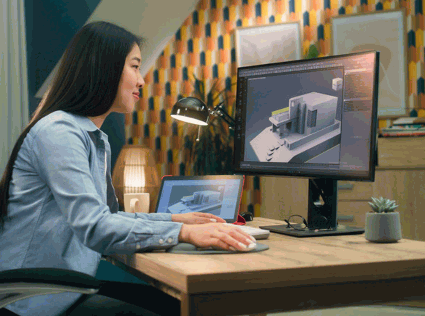
Graphic Design Tools
Graphic design tools play a crucial supportive role in the exterior rendering process by enabling designers to produce presentations, marketing materials, and visual aids that enhance their renderings. Software applications such as Adobe Photoshop and Illustrator can be employed to apply finishing touches, overlay textures, and enrich visual storytelling, thereby facilitating client visualization of the final outcome. This integration of graphic design fosters improved communication and collaboration between designers and homeowners.
These tools significantly streamline the workflow by allowing designers to create compelling visuals that encapsulate the essence of a project. For example, mockups generated in these applications can effectively illustrate various design options, assisting clients in making informed decisions without ambiguity.
Incorporating elements such as color palettes and typography can evoke specific emotions, thereby optimizing the effectiveness of marketing strategies. The outcome is a more engaging experience for clients, who are often better equipped to comprehend their vision when presented with stunning, realistic visuals.
- Marketing Brochures
- Social Media Graphics
- Interactive Presentations
By harnessing the full potential of graphic design tools, businesses can enhance their brand presence and cultivate memorable interactions with their audience.

Virtual Reality Tools
Virtual reality tools are significantly transforming the field of exterior rendering by offering an immersive experience that enables homeowners to explore their designs within a realistic environment prior to actual implementation.
Utilizing technologies such as VR headsets and interactive applications, users can navigate their rendered spaces, thereby gaining a comprehensive understanding of scale, layout, and material selections. This innovative approach not only enhances design visualization but also cultivates a deeper connection between clients and their envisioned projects.
Engaging with the design in a virtual environment allows individuals to visualize potential modifications and evaluate how various elements interact in real-time. The advantages of this approach include:
- Enhanced engagement through vivid simulations
- Safer and more effective decision-making processes
- Increased client satisfaction through tailored adjustments using the render process
Ultimately, the integration of these advanced tools streamlines workflows and ensures that the final product closely aligns with the homeowner’s preferences and aspirations, thereby paving the way for successful outcomes.

What Are The Benefits Of Exterior Rendering?
The advantages of exterior rendering extend well beyond mere aesthetic appeal, substantially enhancing a property’s energy efficiency and providing essential weather protection that extends the lifespan of exterior walls. In particular, the use of Portland Cement in the render process can add significant durability and strength.
By investing in high-quality render applications, homeowners, whether in a National Park or a Conservation Area, can improve insulation performance, reduce maintenance costs, and ultimately increase the overall value of their property.
Additionally, the selection of render type—whether traditional lime renders, monocouche systems, or contemporary silicone options—can significantly impact the durability and effectiveness of these benefits.
Helps With Marketing And Sales
Exterior rendering plays a critical role in marketing and sales strategies, as it significantly enhances the visual appeal of a property, making it more attractive to potential buyers, especially in regions like England and Europe where architectural aesthetics are highly valued.
A visually striking exterior not only improves curb appeal but also serves as a testament to the property’s quality and attention to detail, thereby creating a lasting first impression. According to industry studies, homes with professionally rendered exteriors can experience up to a 10% increase in property value. Furthermore, properties that have undergone such transformations typically spend 30% less time on the market compared to their non-rendered counterparts.
- Investing in quality rendering highlights architectural details, drawing attention to the property’s unique characteristics.
- Many buyers, including readers of Housebuilders Bible and Homebuilding & Renovating, are often drawn to move-in ready homes; thus, a visually appealing exterior can facilitate the decision-making process.
In summary, effective exterior rendering is an essential strategy for homeowners aiming to maximize their investment and expedite the selling process.
Look into: How To Apply External Wall Insulation

Allows For Better Visualization Of The Final Product
One of the primary advantages of exterior rendering is its capacity to provide enhanced visualization of the final product. This allows homeowners to view a realistic representation of their design concepts prior to implementation. The visualization process supports informed design decisions, enabling clients to modify features such as colors, textures, and materials according to their preferences. By utilizing advanced rendering techniques, architects and designers can deliver accurate representations that closely align with client expectations.
Effective visualization not only streamlines the design process but also gives the power to clients to engage actively in the project. By examining a detailed representation of the anticipated outcome, they are better positioned to provide constructive feedback early in the process, thereby reducing the likelihood of misunderstandings later on.
For instance, a residential project in a suburban area that showcased enhanced outdoor spaces resulted in a significant increase in client satisfaction when homeowners were able to visualize and adjust elements such as patio layouts and landscaping before construction commenced. This level of engagement ultimately facilitated a smoother execution, minimizing costly modifications in the future.
- The ability to manipulate design elements in real time has proven to be invaluable, fostering a collaborative approach.
- Projects that incorporate comprehensive visualization techniques frequently report higher client satisfaction scores.
In practice, the significance of visualization in the design process is paramount, as it lays the groundwork for successful project outcomes, enhancing both aesthetic value and project efficiency.
Can Be Used For Different Purposes
Exterior rendering serves multiple purposes, demonstrating its adaptability and design flexibility across a wide range of projects and applications. From residential renovations aimed at enhancing aesthetics to commercial buildings that require protection against weather elements, various types of render are designed to meet specific needs, thereby improving both functionality and appearance. This versatility positions exterior rendering as a critical component in numerous construction and design contexts.
Whether one seeks to add elegance to a traditional home or to implement a contemporary façade for a new commercial establishment, the appropriate choice of rendering can significantly enhance the overall visual appeal. Different rendering materials—including acrylic, silicone-based, and cement render—offer unique benefits that align with the specific goals of each project.
- Acrylic renders provide flexibility and resistance to cracking, making them suitable for a variety of climates.
- Silicone-based solutions are recognized for their breathability and low maintenance requirements, which can substantially reduce long-term upkeep costs, as highlighted in Passivhaus standards.
- Cement renders, on the other hand, are esteemed for their durability and strength, making them appropriate for high-traffic areas.
These tailored options highlight the necessity of selecting the appropriate rendering solution to align with both the aesthetic aspirations and practical demands of each architectural design.

Improves Communication And Collaboration
Exterior rendering enhances communication and collaboration between homeowners and designers throughout the design process, facilitating discussions regarding visual expectations and material selections. By presenting renderings that accurately depict proposed designs, stakeholders can engage in constructive dialogue, ensuring alignment on project goals and outcomes. This collaborative approach not only improves the quality of the final product but also fosters a positive working relationship among all parties involved.
Utilizing detailed visualizations allows both homeowners and designers to identify and address potential concerns early in the project lifecycle, effectively minimizing misunderstandings and ensuring that their visions are aligned from the outset.
This streamlined exchange of ideas promotes a culture of openness, where feedback is not only welcomed but actively sought. Such proactive communication lays the foundation for exemplary project outcomes, enabling teams to collaboratively resolve issues and leverage each party’s unique expertise.
When stakeholders feel acknowledged and valued, it strengthens their commitment to the project, cultivating an environment in which collaboration flourishes and innovations can emerge.

